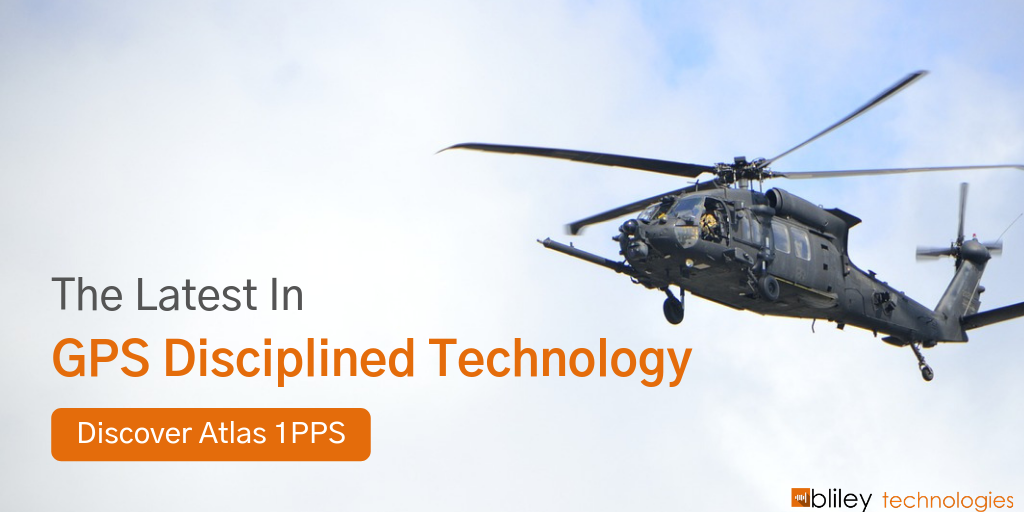
Building resilience into Global Positioning System (GPS) timing and frequency receivers is crucial in the 21st century. Since the presidential directive on U.S Space-Based Position, Navigation, and Timing (PNT) and Critical Infrastructure Protection (PPD-21), federal agencies have been advancing their efforts when it comes to GPS and Global Navigation Satellite System (GNSS) capabilities.
In this post you'll get a look at how GPS, GNSS, and PNT is continuing to evolve in the 21st century, especially when it comes to critical infrastructure protection, and why it's so important.
GPS is Critical in Critical Infrastructure...It's Critical
Building resilience in GPS timing receivers is more crucial now more than ever. GPS now provides precise timing for telecom, financial systems, and the power grid. There are also new efforts being made to enhance GNSS interference detection, mitigation, and spoofing.
In fact, The GPS system is now considered a “crosssector dependency” for the Department of Homeland Security's (DHS) 16 designated critical infrastructure sectors. More specifically, DHS considers 13 of the 16 critical infrastructure sectors to be critically dependent on PNT. The other 3 sectors are considered to be somewhat dependent.
Federal agencies such as the National Coordination Office for SpaceBased PNT are even releasing updated official guidelines for GPS's role in critical infrastructure protection. Examples include “Improving the Operation and Development of Global Positioning System (GPS) Equipment Used by Critical Infrastructure,” published last year by the DHS, and “Best Practices for Improved Robustness of Time and Frequency Sources in Fixed Locations,” released in 2015.
Bringing GPS and PNT into the 21st Century
PNT has evolved significantly since the introduction of GPS. More specifically, there has been an increased need for resilience. PPD-21 defines “resilience” as the ability to prepare for and adapt to changing conditions and withstand and recover rapidly from disruptions.
Resilience includes the ability to withstand and recover from
- Deliberate attacks
- Accidents
- Naturally occurring threats or incidents
- For GPS - consideration of backup systems or “assured PNT.”
Kevin Skey, a senior principal engineer and head of PNT, Wireless Communications, and SIGINT at the MITRE Corporation, described the difference between 20th century GPS and today's GPS as it relates to PNT very well.
"The 20th-century perspective was essentially sanguine: GPS is like the Internet — wonderful technology, nice people; GPS satellites are scarce, so receivers must be promiscuous; GPS receivers are radios."
"A 21st-century perspective, however, must take a much more guarded approach", Says Skey. "GPS is like the Internet — wonderful technology, threats abound; since threats abound, receivers must be robust and discriminating; GPS receivers are networked computers with a wireless access point."
So what would be some specific examples of building resilience in PNT and managing risks? Some examples include
- Operations contingency planning (practices and procedures for GPS disruptions)
- Alternate PNT sources
- Clocks
- inertial
- GNSS
- Vision-aided PNT
- Communication systems
- RADAR
- Improved equipment and systems
- Antennas
- Protection algorithms
- Security engineering
- Cyber-protections
Adopting the Newest Innovations
Organizations that are dependent on GPS technology need to start implementing 21st-century equipment, operations, and installations that align with the newest 21st-century requirements and threats.
More specifically, organizations interested in upgrading their GPS timing receivers should focus on
- Better antennas capable of anti-jamming and anti-spoofing performance
- "Competent" receivers capable capable of anti-jam, anti-measurement spoofing, anti-data spoofing, and using modernized GPS signals
- Product Integration capable of anomoly detection, enablers for alarms and holdover logic, and support for atomic clocks
- Installation and operations that asses GPS dependencies and uses proper configuration
Innovative and robust timing receivers are beginning to appear on the market. Therefore, even emerging threats don't outweigh the benefits of the newest GPS technology. as long as appropriate measures are taken.






